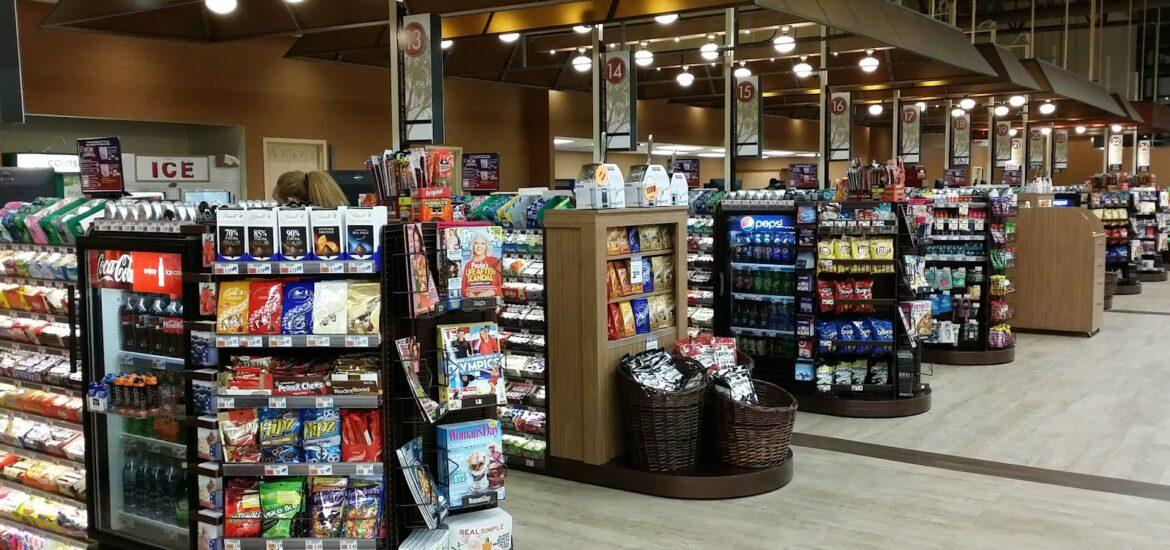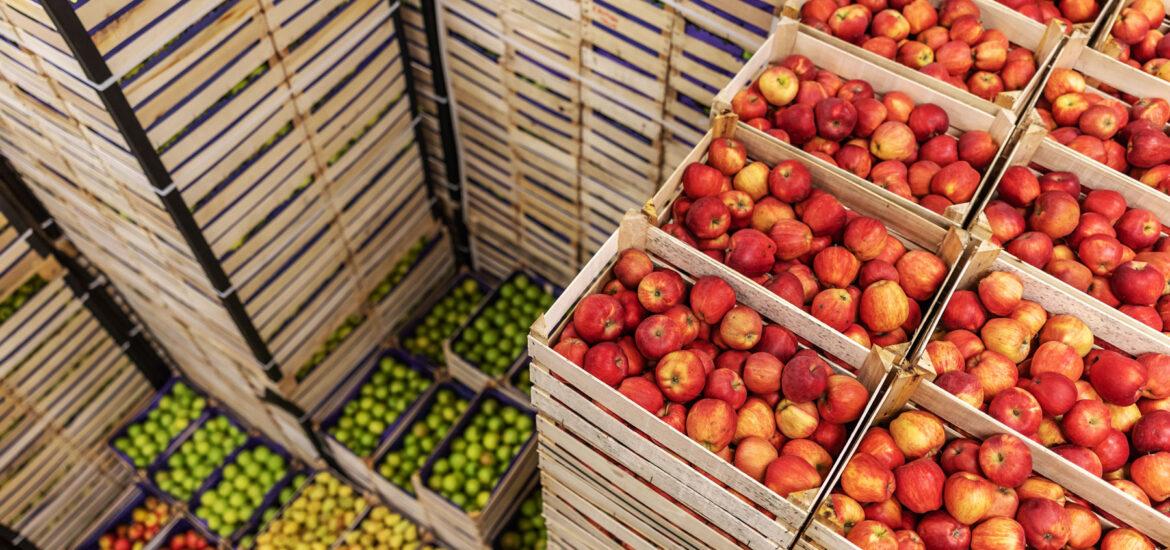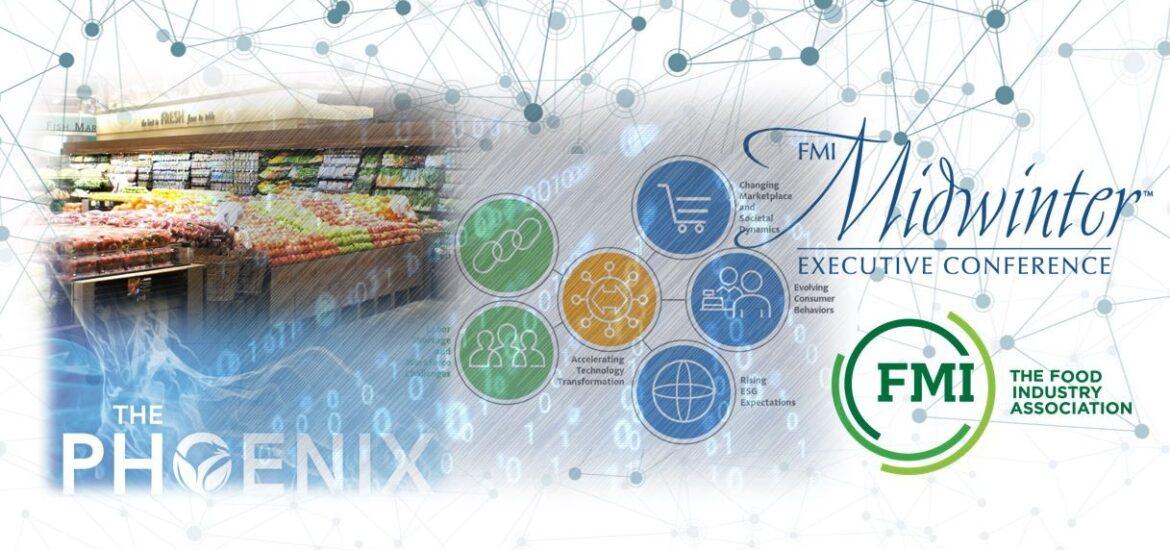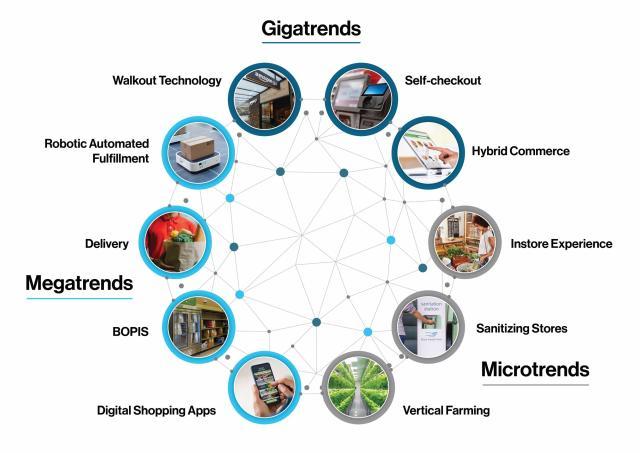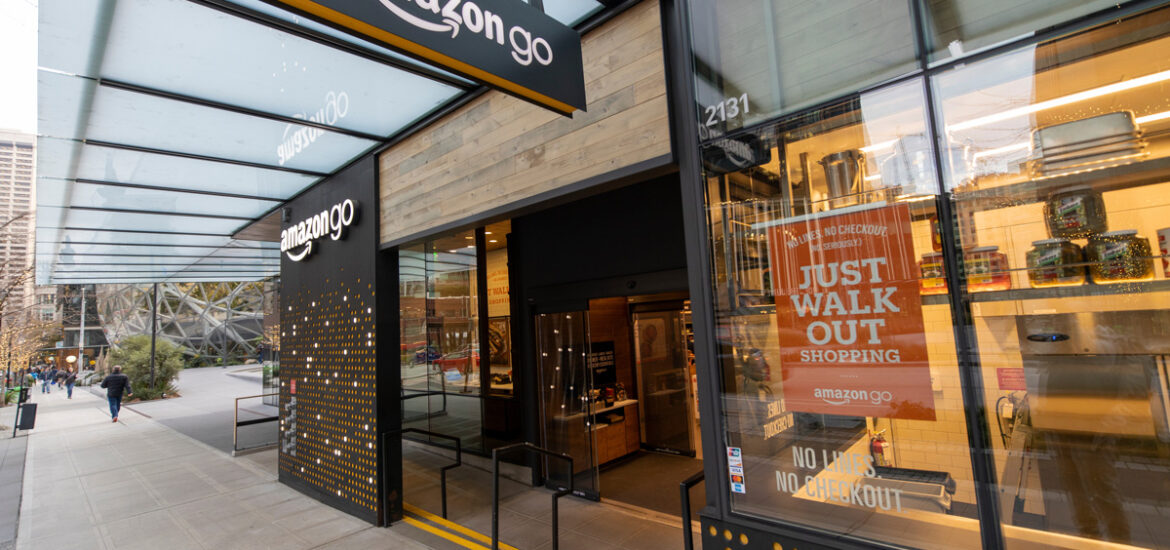Grocery executives once again convened to share their common goals and advocacy issues and consider the year ahead at the 2023 FMI – The Food Industry Association Midwinter Executive Conference. Here are nine highlights that stood out from the three-day event.
Doug Baker of FMI kicked off the education agenda for two days of “FMItech talks” by assembling a cross-section of tech-centric grocers and the entrepreneur’s driving innovation. The question posed after reflecting upon the closing keynote presentation titled, The Never Normal by Peter Hinssen, are the innovation efforts that grocers pursue today sufficient to keep them from falling victim to becoming either a dinosaur or a phoenix?
The FMItech Pitch Competition
This brought forth six finalists – One that piqued our interest was Amoobi’s Chief Executive Officer, Olivier Delangre. This firm has developed a space optimization platform for in-store merchandising and planning. The platform provides many applications to evaluate and analyze customer behaviors, consider merchandising planning, and drive traffic and sales. The applications are data-driven and leverage store-mounted sensors to track customer behaviors.
FMItech Talk – A Fresh Approach to Driving True Digital Transformation
Suzanne Long, Chief Sustainability and Transformation Officer, Albertsons, and Matt Schwartz, Chief Executive Officer, Afresh considered different aspects surrounding fresh products, sustainably, and reducing food waste shrink to enhance consumer experience and grocers’ profitability. Fresh shrink has a considerable impact on store profitability. This application platform can track the flow of a product’s lifecycle through the supply chain. For example, an extra day or two extending a perishable product’s life significantly impacts consumption vs. entering the waste stream. Albertsons has targeted this as a priority.
FMItech Talks – Looking Backward While Moving Forward: Technology Practitioner Panel
This event addressed recent FMI technology research presented by Steve Markenson. The panel consisted of Kirk Ball, Executive Vice President, and Chief Information Officer, Giant Eagle; Charles McWeeney, Vice President of Technology, Innovation, and Strategy, Wakefern and Annette Franke, Vice President of Information Technology, Gorilla Glue. Discussions include how 70-80 percent of grocers are experimenting with improving efficiencies, consumer experience, and e-commerce tools, and now 60 percent with self-checkout. Also, how does automation improve the associate and consumer experience? All panelists agreed that labor is the single biggest challenge. When implementing technology, the value must be shown along its journey. Microfulfillment is considered an option in the tool chest as grocers grapple with the increasing demands of delivering upon customer need states.
Grocery Resiliency During Recession – Deborah Weinswig, Coresight Research
Deborah Weinswig delivered helpful research and a hopeful outlook for 2023, despite the most challenging headwinds experienced in decades. Coresight Research reviewed what worked in the last two recessions and the recessionary behaviors of consumers and retailers. Weinswig shared six actions for retailers to take now. Check out Coresight Research to review the extensive research they make publicly available.
Where Food and Technology Meet – Laurie Demeritt, Chief Executive Officer, The Hartman Group
This session was geared toward food geeks. And who does not love to learn more about what we eat and how it’s sourced? The Hartman Group delivered great insights into the industry and FMI. Laurie Demeritt shared some valuable data segmenting the 11 categories defining the future of food production. The higher degree of food innovation/reinvention and manipulation aligns with consumer skepticism. We recommend that you follow The Hartman Group research.


